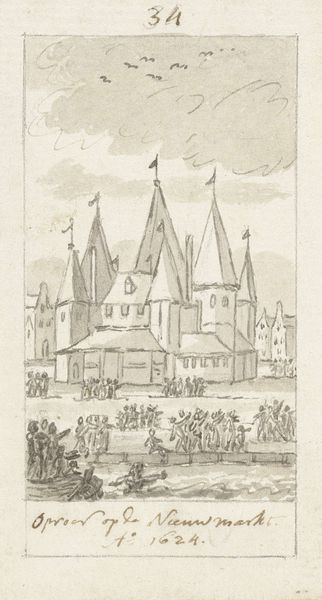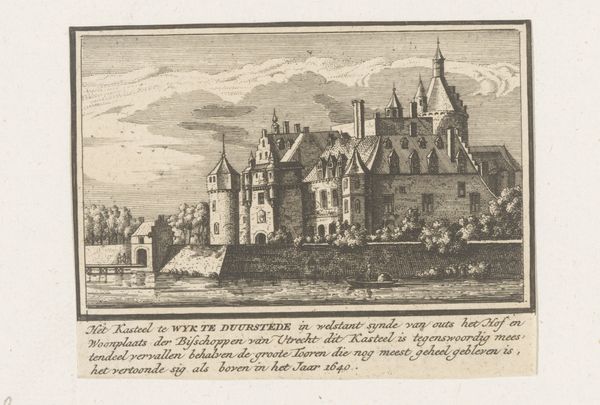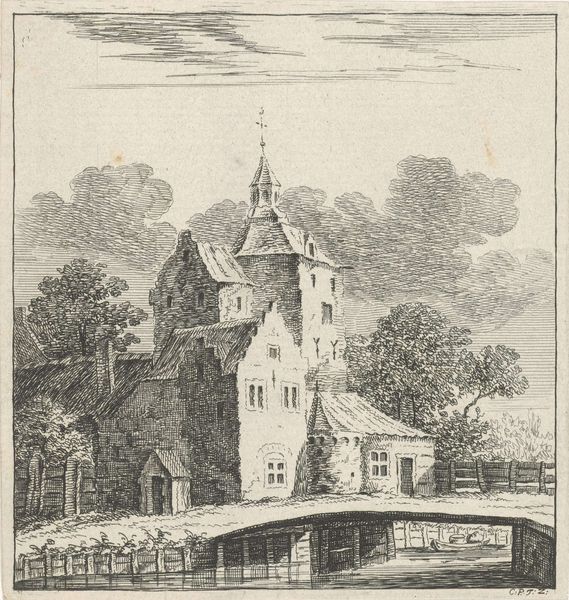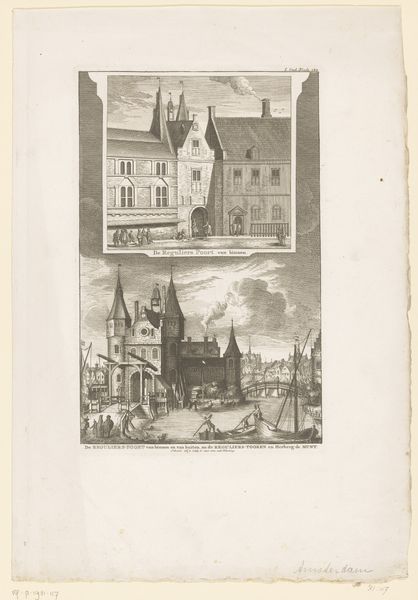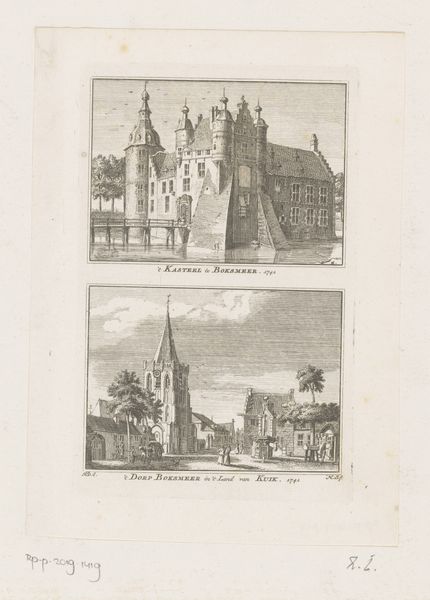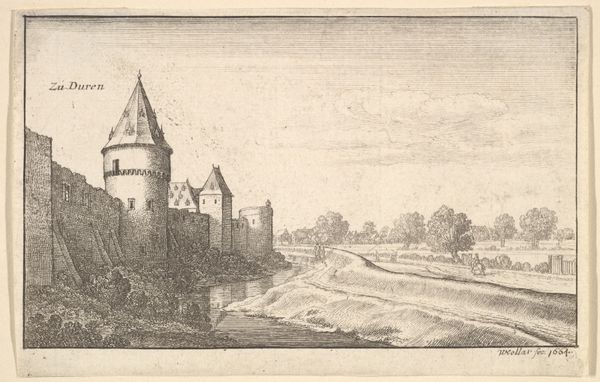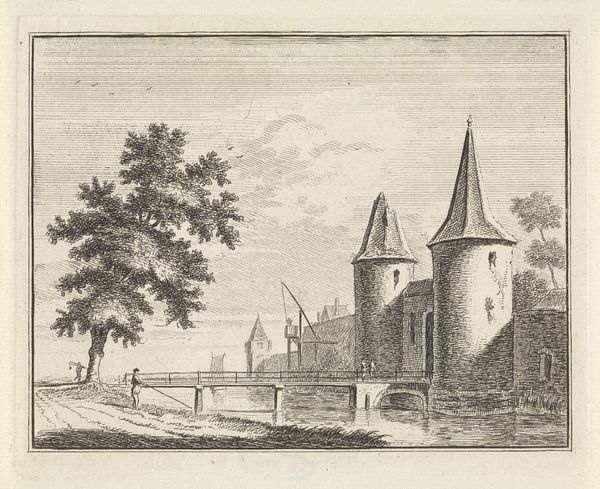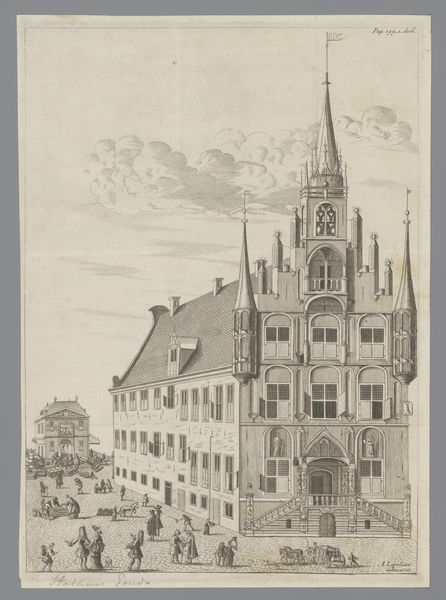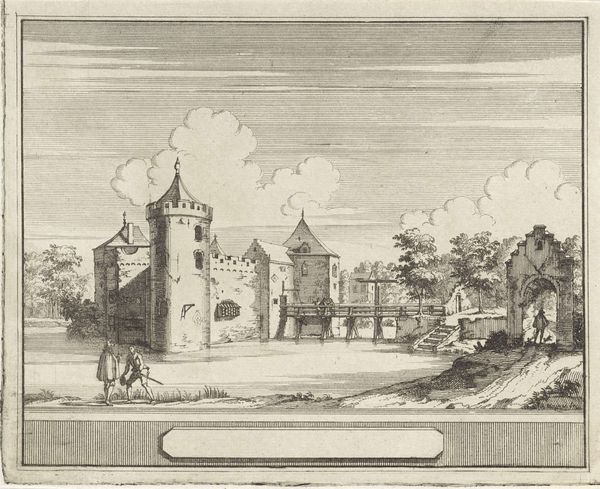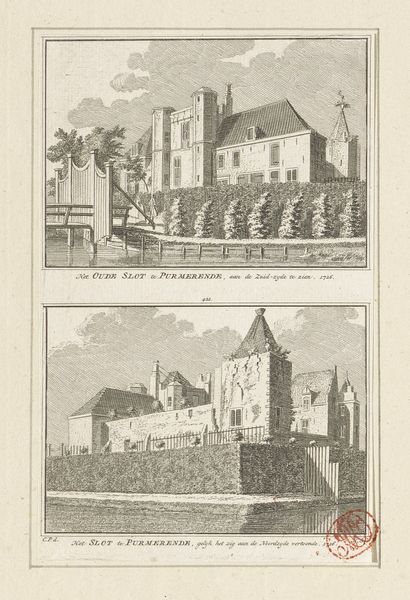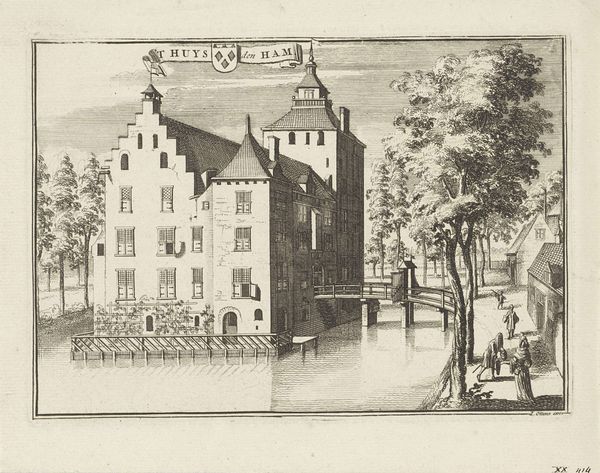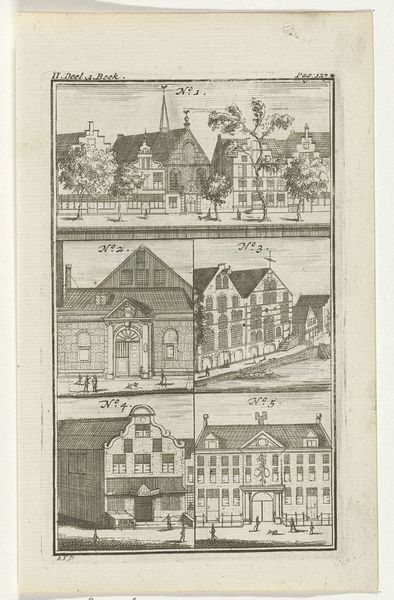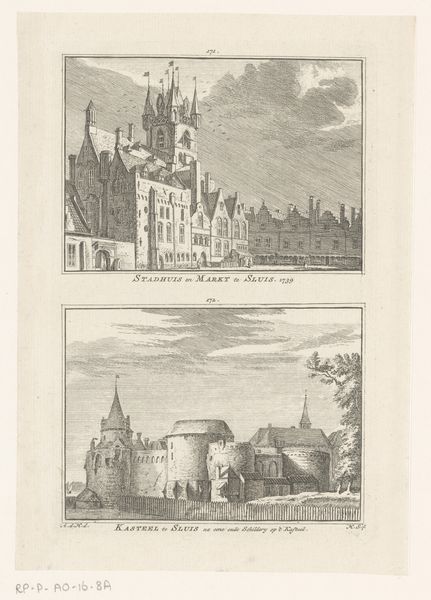
print, etching, engraving
#
narrative-art
#
baroque
# print
#
etching
#
old engraving style
#
pen-ink sketch
#
cityscape
#
engraving
Dimensions: height 99 mm, width 63 mm
Copyright: Rijks Museum: Open Domain
Curator: Standing here at the Rijksmuseum, we have before us a print entitled "Oproer op de Nieuwmarkt over een gewaande tovenares, 1624," depicting a riot on the Nieuwmarkt in Amsterdam, created sometime between 1722 and 1784 by Simon Fokke. It’s an etching and engraving. Editor: My immediate impression is the incredible detail achieved through this combined process of etching and engraving. You can almost feel the chaos and intensity of the moment. It’s quite a feat to pack this much movement and emotion into such a small scene using only lines and textures. Curator: It really captures a tumultuous moment. This work illustrates an episode where a woman was accused of witchcraft, sparking a violent confrontation in the heart of the city. It highlights the anxieties and superstitions present during this period, showing us how easily a community could turn against one of its own. The print also reveals the complex dynamics between local beliefs, social order, and civic authority. Editor: It speaks to the labor involved; creating such a fine rendering using metal and acid requires immense skill and control over the materials. Also, consider how the prints themselves became objects of circulation, reproduced and distributed widely to inform and perhaps influence public perception of these events. This easily circulated image acted as a kind of readily distributed, and impactful media. Curator: Absolutely. Fokke’s choice to create this print suggests a conscious decision to disseminate this information to a broader public. Consider also the role of printmaking within the context of the Enlightenment; it served as a medium for social commentary and critique. By visually documenting such a controversial event, Fokke engages with this broader tradition of using art as a tool for public discourse. Editor: And while this engraving might seem far removed from today's media, consider the similarities: The act of representing the tumultuous situation as it happened connects this work with the practice and purpose of photojournalism today. We should consider how we continue to process tragedy and fear through different kinds of distributed and reproducible media. Curator: Thinking about how art helps us consider culture—its ability to illustrate anxieties, biases, and conflicts inherent in specific times in history. I always learn something about our present. Editor: And for me, looking at this etching—considering the labor and the method that created the artwork—always inspires admiration. These images speak powerfully about our collective history of material and political engagement.
Comments
No comments
Be the first to comment and join the conversation on the ultimate creative platform.

